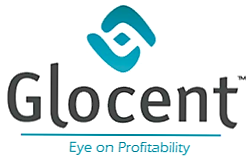

Three considerations before you buy:
Your business plans to purchase a mission critical enterprise software solution, what should you know? Will the software meet your objectives? How long will it take to implement the new system? What will it cost? Let’s focus on the last question. There are three costs tied to the purchase: the software application, system configuration and future support fees. Typically, the primary focus of software contract negotiation centers around the application cost. That is often thought to be the largest financial commitment. Less apparent and perhaps more costly, however, are the unanticipated cost overruns tied to application implementations, and the inevitable support required to update and maintain the system.
Many financial executives will tell you that what frustrates them the most about software purchases is the budget-busting cost overruns to implement and support them. Before you agree to pay anything for a software system, you should lock in all costs to purchase, implement and support that system. Some vendors will likely argue, however, that this is not possible. They will cite the many nuances, unique needs and unknowns each business or customer brings to the project. That argument should generate the question, “Is that the vendor’s, or the potential customer’s problem?”
Know what you are purchasing:
Would an informed purchaser by anything knowing that it wouldn’t work? Would you buy a new computer if you knew that it would only work “most” of the time? Would you buy a new phone if you had to pay additional monthly fees to update the software behind it? Would you purchase a new-build home if, after agreeing to the price of the home, it took several months longer to build than promised? Would you agree to pay a higher at the time of closing for unexpected work? Would you move into that house knowing that some of the appliances didn’t work, the roof leaked, and the foundation was already beginning to crack? If not, why purchase a software application you can’t install in the time allotted, for a set cost, and will perform all the functionality it was promised to support? Unfortunately, that happens every day.
Properly informed purchasers understand the importance of locking down both the benefits expected and the costs to achieve those benefits. So, how can you accomplish that when you negotiate the terms of a software application agreement? The contract should ensure full satisfaction of system operations for the price negotiated. Next, the implementation cost should be set as a fixed price, regardless of the unknowns encountered during the process. You would expect a vendor knows its business well enough to anticipate those. Any deviation from that price must require the purchaser’s pre-approval, and allow the purchaser to kill the project if no approval is secured. Finally, ongoing support costs should be offered as a set price, not based on fluctuating hourly support fees. Beware of vendors who offer support, and bill by the hour. That scenario creates inevitable cost uncertainties.
Hourly support fees serve two purposes. They generate ongoing revenues due to product imperfections and limitations, while creating the false sense of comfort that help is just a phone call away. Secondly, it reveals a vendor’s lack of confidence in its own product. After all, if a product can accomplish all that it professes to support, those costs should be predictable.
Take control:
The solution to control these variable costs is straightforward. First, ensure sure that you purchase a product that provides the correct solution (proof of concept) https://glocent.com/2020/02/. Second, insist that the vendor support the application’s performance with a full guarantee. Third, settle for nothing less than a support plan similar to Business Process Management as a Service (BPMaaS). This ensures complete support for a fixed price. Learn more about this support model at https://glocent.com
Don’t fall into the intentional trap of buying something that may never work, will cost more to implement and maintain than the purchase price, and will leave you feeling frustrated as long as you are forced to use it.





